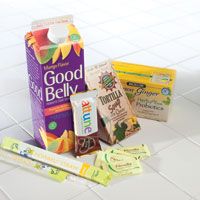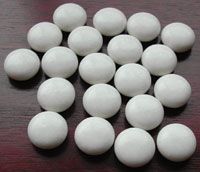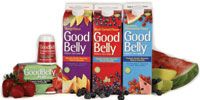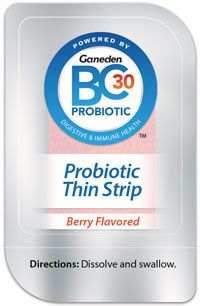Growing Potential
Analysts predict no slowing down of probiotic growth. In September, Markets and Markets forecasted 12.6% compound annual growth rate (CAGR) for the global probiotics market until 2014, when total sales, it says, should reach $32.6 billion. Similarly, in October, Packaged Facts estimated that global probiotics sales will grow at 12% CAGR to exceed $22 billion by 2013.
Originally Published NO January/February 2010

Analysts predict no slowing down of probiotic growth. In September, Markets and Markets forecasted 12.6% compound annual growth rate (CAGR) for the global probiotics market until 2014, when total sales, it says, should reach $32.6 billion. Similarly, in October, Packaged Facts estimated that global probiotics sales will grow at 12% CAGR to exceed $22 billion by 2013.
Europe and Asia continue to lead worldwide probiotic sales, accounting for 42% and 30%, respectively. However, U.S. interest is ramping up. According to Nutrition Business Journal, sales of probiotic supplements quadrupled from 1998 to 2008, reaching $425 million.
Consumers have grown more accepting of the concept that probiotics, or "friendly" bacteria, can support digestive and immune health and a host of other health aspects. Now moving beyond general education, the probiotics industry is working to teach consumers the importance of identifying the appropriate bacteria, or condition-specific strain, for their particular health concern.
As consumer acceptance of probiotics has grown, food and beverage manufacturers have taken the opportunity to introduce probiotics to categories beyond fermented dairy products. Although yogurts and fermented dairy beverages continue to dominate the probiotics market, probiotics are now making appearances-some successful and others not so much-in food categories where probiotics had previously not been seen.
As manufacturers strive to bring probiotics onto store shelves in a widening array of products, the challenges of keeping bacteria alive become heightened. "I would say that maintaining the stability of probiotic bacteria is one of, if not the most important, issue being worked on by the probiotics industry," says Michael Shahani, director of operations for probiotics supplier Nebraska Cultures Inc. (Walnut Creek, CA).
Friends and Foes
Bacteria don't live forever-but they can survive longer under certain conditions.
"The four elements that are detrimental to the stability of probiotic bacteria are moisture, heat, oxygen, and light," says Shahani. "In processing or using probiotics or functional foods, these four elements must be eliminated-or at least reduced as much as possible."
Yogurt has been an ideal delivery vehicle for probiotics because it is kept refrigerated and has a short shelf life. Capsules can help to keep moisture and oxygen out.

In order to include probiotics in other products, however, some manufacturers have turned to microencapsulation. While microencapsulation can't protect against extreme conditions of high-shear mixing or very high temperatures during baking or processing, it can help to better protect bacteria in high-moisture systems. Once in the body, microencapsulates may also protect probiotics from gastric acid. However, some say that it's still a challenge to find a microencapsulation system that can adequately protect delicate probiotic bacteria.
"Danisco has evaluated numerous microencapsulation technologies over the past decade and has not found any that provided significant stability enhancement in intermediate moisture systems," says Scott Bush, vice president of the dietary supplements business, cultures division, for Danisco (Madison, WI). Bush adds that the additional processing involved in microencapsulation can actually reduce cell numbers.
Instead, Danisco elected to develop its own patent-pending encapsulation technique, which the company announced this past fall. Danisco says that its system improves probiotic survival in high temperatures and semimoist applications.
THE POPULARITY OF PREBIOTICS
LIKE PROBIOTICS, prebiotics are being included in a widening range of products, from pudding to frozen chicken dinners, according to Packaged Facts. In fact, Packaged Facts says that although probiotics is a more established category than prebiotics, prebiotics is the faster growing market.
"As consumers continue to show interest in functional ingredients like prebiotics, food manufacturers are exploring convenient ways to incorporate these into commonly consumed food and beverage products," says Lorraine Niba, regional marketing manager for FrieslandCampina Domo (Paramus, NJ). "While products like yogurt and other dairy products have been the most common category where these ingredients are used, developments in technology are enabling manufacturers to add prebiotics to less-traditional products like frozen desserts, sweet desserts, and candy." She adds that certain prebiotics can be used to replace sugar and butter in desserts, without adverse impacts on product quality.
"Prebiotics often have more versatility in food applications than probiotics do," says Lisa Sanders, nutrition scientist from Tate & Lyle (Decatur, IL). "So you will see them in a wide variety of food items-bars, beverages, juices, yogurts, cereals, baked goods. You can get prebiotics into some applications that it can be difficult to get probiotics into."
However, she adds, some ingredient suppliers' prebiotics may be more versatile than others. "For example, our prebiotics, which are our Promitor Soluble Corn Fiber and our Promitor Resistant Starch, are both stable at high temperatures, in acidic environments, and at various pHs. Not all prebiotics have that capability."
In September, Danisco reported that initial tests showed a tenfold improved resistance to temperatures up to 50°C when a Lactobacillus acidophilus culture was encapsulated using the new technology. In addition, the strain retained 60% of its viability after five months of storage at room temperature in a nutrition bar with a moisture level of 0.35Aw. The company also said that additional tests incorporating the encapsulated probiotic in cheese showed processing resistance 2500 times superior to that of control.
"The new encapsulation technique will eventually open up new development possibilities in nutrition bars, infant formulas, breakfast cereals, powder beverages, and processed cheese," noted Isabelle Mazeaud, bioprocess development senior scientist for Danisco.
Another company with its own unique technology for microencapsulating probiotics is Maxx Performance Inc. (Chester, NY). "We find that more companies are coming to us looking for this," says Winston Samuels, the company's president and CEO. "Most of the options out there today are unstable."
Samuels says that his company's technology can improve the durability of probiotics so that products are shelf stable at room temperature. "Manufacturers can transport products as is, instead of having to transport them under refrigerated or freeze-dried conditions," he says. He adds that a lot of the probiotics that his company microencapsulates end up in products such as cereal, muffins, and other bakery products; powders; and cheese.
While current microencapsulation technologies offer some protection to probiotics, they still can't preserve probiotics as well as refrigeration can, says Nebraska Cultures' Shahani. For this reason, he suggests adding more probiotics to a formula than necessary, with the expectation that many will not survive. "Manufacturers have to get used to overformulating so that enough live bacteria are available in a product, even if some or most of the bacteria die off over time."
Danisco's Bush points out that starting with a stable probiotic is key. "If they're more stable to start with, they'll be more stable in whatever application you use them in afterwards."
He adds, "Our most stable cultures are our Lactobacillus acidophilus and Bifidobacterium lactis strains, which are stabilized with a unique and patented stabilization system. We've made tremendous advances in culture stabilization versus where it was, say, five to ten years ago."
Spore Formers
Some brands looking for probiotics that can withstand extreme conditions have turned to spore-forming bacteria. These types of bacteria form a spore, or a hardened shell, that helps to protect the bacteria's genetic material against various temperatures as well as high-shear processing. Ganeden Biotech (Cleveland) has been the leading supplier of spore-forming bacteria Bacillus coagulans under the brand name GanedenBC30.
For Ganeden, 2009 was a big year in terms of launches in functional foods and beverages. Last year GanedenBC30 made its debut in a number of products in which probiotics had never been used before-including hot liquids such as tortilla soup for Turtle Island and hot tea for Bigelow Tea Co.
"These products are completely counterintuitive to what you'd typically expect to see probiotics featured in," says Michael Bush, vice president of business development for Ganeden. "For years, our industry has been told that we have to keep probiotics refrigerated to be stable, but we are able to subject our clinically proven spores to hot-temperature water." On the flip side, GanedenBC30 can also be used in extremely cold products, such as frozen yogurt, with virtually no loss of shelf life, says Bush.
Other products launched with Ganeden BC30 included Racconto's Essentials Digestive Health pasta, Nevella sweetener, a Max Muscle high-protein probiotic nutrition bar, and Red Mango's probiotic iced tea and frozen yogurt.
"The ability of GanedenBC30 to survive the heat of manufacturing and cooking made it the perfect choice to include in the Essentials Digestive Health line," said Rod Bambach, vice president of sales for Racconto.
Mt. Capra Wholefood Nutritionals (Chehalis, WA) chose GanedenBC30 for its Yo-Quick add-to-water goat's milk yogurts. Ganeden's probiotic complements the other bacteria naturally occurring in the yogurt blend. "The probiotics in this dry state are just waiting to be released at their full potential and viability as you mix up your personal size of Yo-Quick instant yogurt," says Joe Stout, research scientist for Mt. Capra.

Strategic Planning
When creating probiotic products, remember that consumers may be more accepting of certain product types. Probiotic cheeses, for instance, have not had a lot of market success yet-"not because the probiotics were not alive, but because the public didn't perceive cheese as a food product in which probiotic bacteria were a benefit," says Shahani of Nebraska Cultures.
"It's feasible to add probiotics in other food matrices, but it should be a product with a healthy image," says Mirjana Curic-Bawden, PhD, senior scientist and application manager, fermented milk and probiotics, for Chr. Hansen Inc. (Milwaukee), which recently launched its new Probio-Tec marketing platform for its probiotics for dietary supplements.
"The concept has to make overall sense to consumers," continues Curic-Bawden. "There is no point in putting probiotics-or for that matter any other functional ingredient aimed to maintain good health-in high-fat, high-sugar, high-calorie food. For instance, if a frozen novelty food is a target, probiotic frozen yogurt has a better chance to succeed than a probiotic full-fat ice cream."
She adds, "Unless there is a strong correlation in the consumer's eyes between the food type and live microorganisms, the product probably will not be successful."
Shahani says that Nebraska Cultures has done some tests with probiotics in chocolate. "The stability is remarkably good," he says. "However, in spite of the research showing the health benefits of dark chocolate in particular, chocolate is still not perceived by the public as a health food."
He adds, "The challenge is pairing the kind of product in which the public wants probiotics with a technology that can actually deliver live probiotic bacteria in that product."
"A lot of companies are looking at different delivery vehicles for probiotics, and some of them make sense and some may be a stretch to gain commercial acceptance," says Danisco's Bush. "There are certain products that people look to deliver health benefits and that consumers more readily associate with cultures, which may improve their likelihood of success."
Bush says that he does expect to see an increase in different types of products launching with probiotics-but he expects some of those products to remain niche. "Juices, cereals, gums, and other confections are some of the newer formats for probiotic delivery," he says. "Some of these may see significant growth. However, in at least the near term, yogurt and fermented beverages will remain the dominant food delivery vehicle for probiotics."
Meanwhile, will suppliers such as Danisco continue to adapt their probiotics and technologies to accommodate new product applications? "We will where we think it makes sense," says Bush.
PROBIOTIC PROGRESS
Chewing Gum
At last November's SupplySide West trade show in Las Vegas, Frutarom USA (North Bergen, NJ) introduced its prototype for a probiotic gum. The gum features BLIS K12, a strain of Streptococcus salivarius, an oral probiotic bacteria that Frutarom says is an immune booster that can support ear, nose, and throat health.
"Healthy people already have S. salivarius in their mouths, but BLIS K12 is unique because it produces proteins called salivaricins that make it more potent against pathogens," says Laurent Leduc, vice president of health and marketing for Frutarom USA. "Studies have shown that people who have BLIS K12-like bacteria in their mouths are more resistant to throat infections." BLIS K12 has also been shown to kill bacteria that cause halitosis, he adds.

Chewing gum is an ideal delivery system for this type of oral product because of the extended amount of time it stays in the mouth. "For an oral care probiotic, gum as a delivery vehicle is superior to any other," says Tom Holtgen, managing director for Tab Labs Inc. (Langley, BC, Canada), which developed the gum technology. "This is because the probiotic needs to be released over several minutes in the mouth to achieve maximum effectiveness in allowing the probiotic strain to colonize the oral cavity."
Unlike regular gum, whose production usually involves heat and moisture, the probiotic gum was compressed without using heat or moisture-a proprietary process mastered by Tab Labs. "Previously, manufacturers were unable to develop a stable functional gum application due to probiotic bacteria's sensitivity to heat," says Leduc.
Once made, the gum is shelf stable for up to two years at room temperature, although "extreme heat or humidity can pose problems, as with any probiotic," Leduc adds.

Probiotic Juices
Last year, probiotic juices began making a splash. Juices often require a probiotic strain that can survive an acidic environment.
In September, Swedish firm Skånemejerier launched its 100%-natural Bravo Friscus probiotic juice line, marketed as offering immune system benefits. The juices feature strains Lactobacillus plantarum HEAL9 and Lactobacillus paracasei 8700:2 from Swedish probiotics firm Probi.
In the United States, NextFoods launched its GoodBelly probiotic product line. In addition to large and small fruit drinks that offer 20 billion probiotics per serving, the line also includes GoodBelly BigShot, which contains 50 billion probiotics per serving.
The probiotic used in the line is Lactobacillus plantarum 299V, which the company calls a "super probiotic" because it thrives in both acidic juice environments, as well as the acidic environment of the digestive tract.

Thin Strip
Among Ganeden Biotech's (Cleveland) most unique launches last year was a quick-dissolving probiotic thin strip. The company says that the thin strip format is an alternative for people who prefer not to take supplements in liquid or pill form. The thin strip features the company's GanedenBC30 Bacillus coagulans probiotic.
One of the biggest challenges was ensuring that the probiotic withstood processing as the thin strip material was heated and run through a press. "It's a very intensive process that involves heating, drying, and cutting," says Michael Bush, vice president of business development for Ganeden. "It's a tough process, and we're pleased that we were able to do it so well." Ganeden offers private-labeling services for the thin strips.

Yogurt Bears, Straws
Last year, Danisco (Madison, WI) introduced several innovative new concepts for its HOWARU brand probiotics-including probiotic yogurt bears and straws containing beads of probiotics.
The yogurt bears, suggested for a children's immune and digestive health product, contain probiotic strains Lactobacillus acidophilus NCFM (sold under the name HOWARU Dophilus) and Bifidobacterium lactis HN019. The chewable bears have a creamy texture and can be flavored vanilla or strawberry. The product was developed together with Anlit Advanced Nutrition Supplements (Israel).
The straw technology, which Danisco licensed from Unistraw International Ltd. (Chippendale NSW, Australia), contains dry "unibeads" of HOWARU probiotics. The straw was designed to offer a convenient way for consumers to carry and use probiotics in their beverage of choice. As liquid passes through the straw, the probiotic beads slowly dissolve.
Also last year, Danisco launched a global program featuring its HOWARU Dophilus probiotic in reduced-fat ice creams-a reminder of probiotic possibilities in that product category.
PROBIOTICS: A SCIENCE-BASED PARADIGM SHIFT
By Irfan Qureshi, ND, and John R. Endres, ND
RESEARCHERS IN THE FIELD of human health are quickly coming to realize the important role played by the bacterial and other microbial inhabitants of our digestive tract in our health and well being. As scientists continue to delve into the intricacies of these organisms and the interplay they have with the human immune system, the more it becomes clear that the influence of these microorganisms extends beyond digestive health.
Immunologists estimate that up to 70% of the human immune system may be contained in the digestive tract. With such a large potential for interaction, these microbial residents of the digestive tract can exert a tremendous amount of influence. Given that there are at least 10 times as many bacteria as there are cells in the human body, with between 500 to 1000 distinct species, it is easy to see how these microorganisms can exert far-reaching effects on the immune system and thus play a part in numerous conditions.
Research into the effects of probiotic organisms on disease processes as diverse as asthma, inflammatory bowel disease, arthritis, heart disease, obesity, and many others, has shown promising benefits. Adverse alterations of the bacterial balance significantly impact health, while it seems that favorably altering the bacterial environment in the intestines ultimately can play a restorative role.
One of the major mechanisms employed by probiotics in their interaction with the gut immune system may be through their modulatory role on the inflammatory process-especially chronic, low-grade inflammation. The significance of chronic inflammation in disease conditions is now well-documented. By potentially reducing the destructive effects of the inflammatory process, healthy intestinal flora may beneficially support a reduction in the severity of disease conditions.
While research into the health effects of probiotics has come a long way over the last decade, there are still many questions that remain unanswered, especially when it comes to supplementation with probiotic bacteria. While there are some well-characterized genus and species that most consider to be healthy strains-Lactobacillus and Bifidobacteria come to mind-do we know which particular species are more beneficial for one condition versus another? Are there certain strains within a particular species that have been better studied versus others? When it comes to product quality, how would a consumer know that the product being considered contains the species on the label? Going beyond these practical considerations come the questions of probiotic safety and viability. A major trend currently is to design functional foods containing probiotic organisms, in addition to dietary supplements with probiotics. Putting probiotics into food requires serious thought and further emphasizes the questions of product safety and viability.
Several concerns regarding the overall safety of probiotics-especially related to their use in certain susceptible populations-were raised in a recent publication in Nutrition Reviews (2009) by Jasmeet Kataria and colleagues. While affirming the large body of evidence in favor of the health benefits of probiotic organisms, Kataria points out potential risks in ill patients and in young children with the use of probiotics for certain conditions. While in the overall scheme of things these concerns seem to be minor, the potential for adverse effects with inaccurate dosing, administering poorly characterized species, or dosing probiotics to certain susceptible or immune-compromised populations is real.
Product quality concerns with numerous probiotics have also been pointed out in published literature. As an example, Dr. Sheryl Berman and Diane Spicer (2004) from Bastyr University analyzed the contents of 20 brands of Lactobacillus supplements pulled from health food stores by culturing the organisms for viability. They found that of the 20 brands tested, only one had organisms isolated that were identical to those listed on the bottle. Moreover, 30% of the samples had contaminants (nondesirable organisms), and 20% of the brands showed no growth (viability).
For consumers of probiotics, this is distressing news. While many wish to avail of the health benefits of supplementing with probiotic organisms, with product quality and safety issues being of concern, is it really just "buyer beware"? Companies marketing probiotics need to address these major issues of quality and safety, while also conducting research that looks at efficacy of products for various health conditions. However, the current paradigm is such that manufacturers are hesitant to conduct research on their products for fear that another company selling similar products would "borrow" that science to market their own probiotics.
A strategy currently being used by many companies in light of these challenges is the development of proprietary or patented strains of probiotic organisms. This seems like a viable approach that serves to ensure consumers are getting a quality product, and manufacturers retain some intellectual property based on the research dollars they have put into the development process. Under this paradigm, manufacturers and developers are more inclined to fully characterize their proprietary strains and conduct studies establishing the safety of their products for human use. Furthermore, companies also feel comfortable researching potential benefits associated with their unique product.
There are several examples of products currently on the market illustrating how this strategy leads to better research into safety, quality, and efficacy. One such probiotic product marketed for digestive health is Align from Procter & Gamble. Align contains a patented strain of Bifidobacterium infantis 35624, which is trademarked Bifantis. Bifantis is the subject of several published preclinical and clinical studies, with others in the works. The most well-studied indication for Align is Irritable Bowel Syndrome, where it has shown efficacy in improving several symptoms.
GanedenBC30 from Ganeden Biotech is another well-characterized patented strain of a novel probiotic organism known as Bacillus coagulans. GanedenBC30 is marketed as a multipurpose probiotic that can be used in a variety of food applications. The marketed attributes of the product include its stability at room temperature (no refrigeration needed), its ability to survive gastric acidity, and the fact that it remains viable at high temperatures (30°C or higher). This makes it an ideal choice for baking and other food manufacturing applications since other organisms don't remain viable under these conditions. Ganeden Biotech has conducted extensive safety studies, the results of which have been published in Food and Chemical Toxicology. Several publications regarding efficacy of the product are also available.
Choosing proprietary or patented strains that have been well-researched offers tangible benefits for consumers and manufacturers. Producers have the incentive to more fully research these products because there is a higher potential for return on investment. Consumers, on the other hand, can have a higher level of confidence in the fact that the strains are much better characterized, have undergone a proper safety assessment, are manufactured to a higher quality standard, and provide evidence of efficacy for particular conditions. With highly educated consumers demanding a higher level of scientific evidence of safety, quality, and efficacy, the companies that cater to these requirements are the ones that will forge ahead in the long run.
Irfan Qureshi, ND, is vice president for technical and regulatory affairs for AIBMR Life Sciences (Puyallup, WA). John R. Endres, ND, is chief scientific officer. AIBMR Life Sciences Inc. (www.aibmr.com) offers full-service natural products and nutraceutical consulting services.
Recent study compares the effectiveness of two probiotic products on colicky infants
October 31st 2024The study compared AB-Biotics and Kaneka Probiotics’ probiotic formulation of Bifidobacterium longum KABP®-042 and Pediococcus pentosaceus KABP®-041 to Lactobacillus reuteri DSM17938 (LR) from Biogaia.